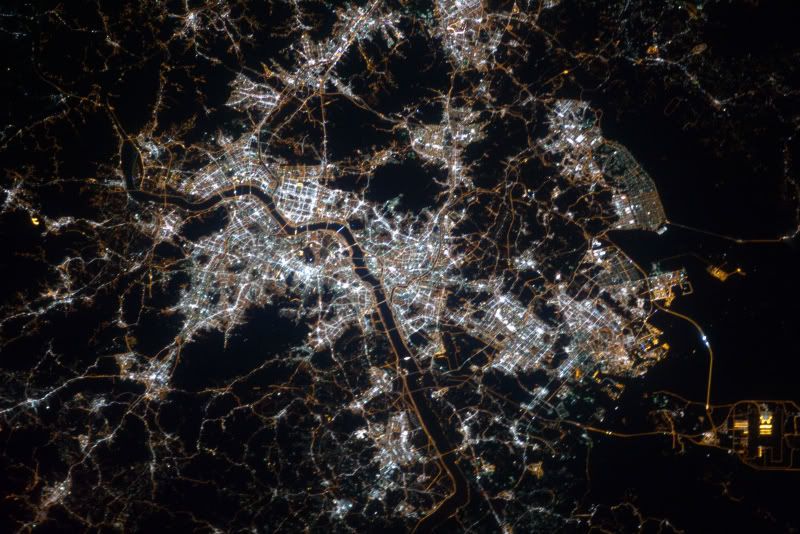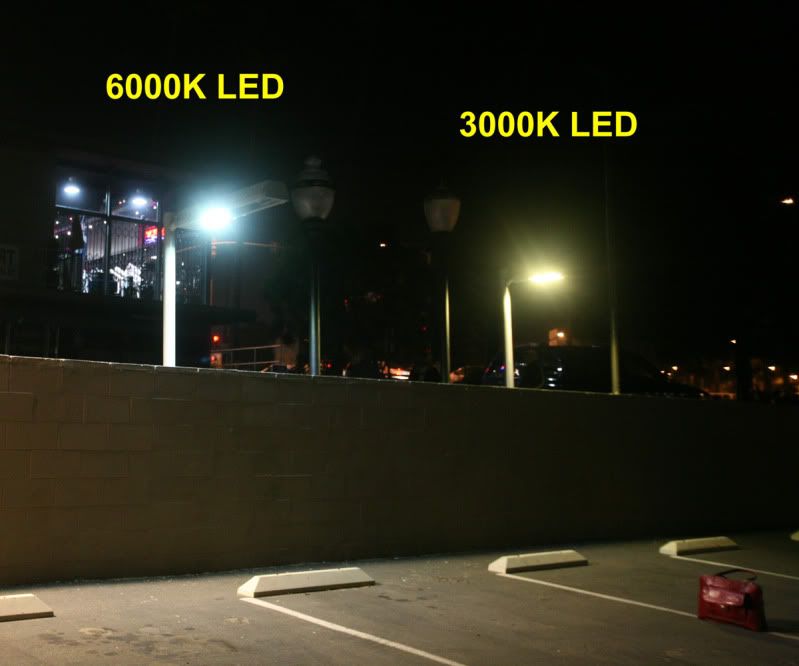If you have been looking at the other cities shown here this month you'll notice that Seoul doesn't look like anything we've seen so far. The streetlights here are predominantly white:
 |
| Image from NASA's The Gateway to Astronaut Photography of Earth |
If the photo above is any guide the lights in Seoul are of a very high color temperature, meaning that they are very rich in blue light. There are potential dangers associated with this. Hopefully as the switch comes to the U.S. there will be limits in place that will ensure that the lights are of a much lower color temperature.
Have a look at the two LED lights below and you'll notice that the higher color temperature lamp on the left looks blue and the lower temperature one on the right looks yellow.
The yellowish light on the right is made up of a different mix of light. It has less blue in it. While this is not as attractive astronomically as a narrow-band light source (like low-pressure sodium), the lower color temperature lamp will produce less skyglow than the higher temperature one (if all other things like level of illumination and light fixtures are equal).
Back to Seoul, there are measures in place to begin fighting light pollution in there, although just a few months ago there were stories about proliferation of light pollution from neon beacons on churches there.
Tomorrow we head to Japan.

No comments:
Post a Comment